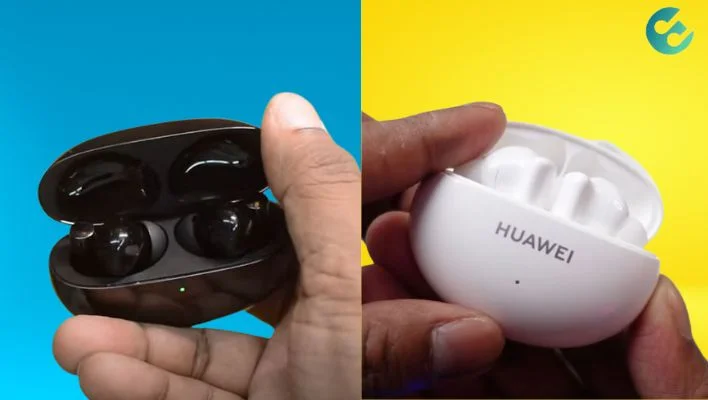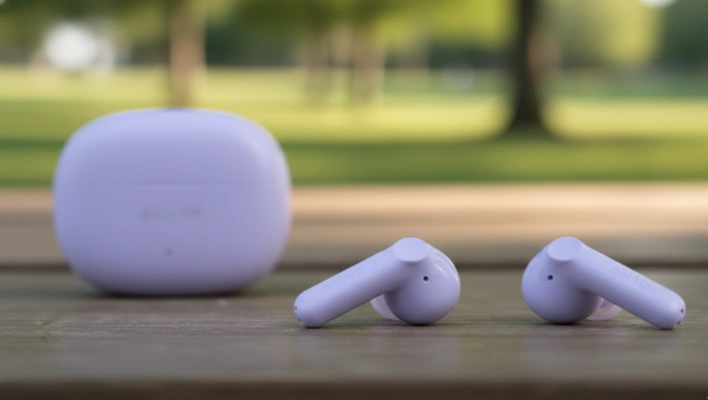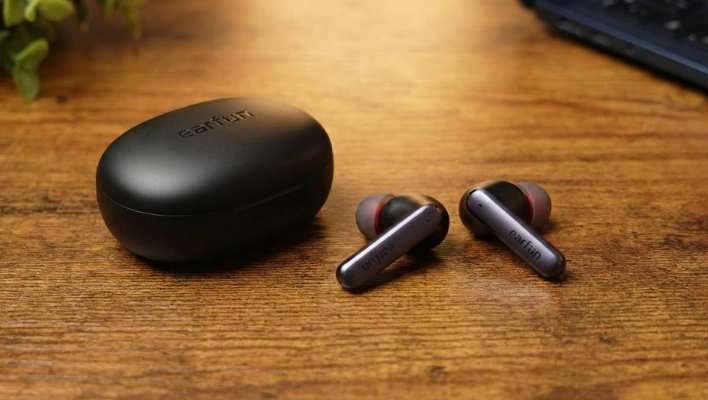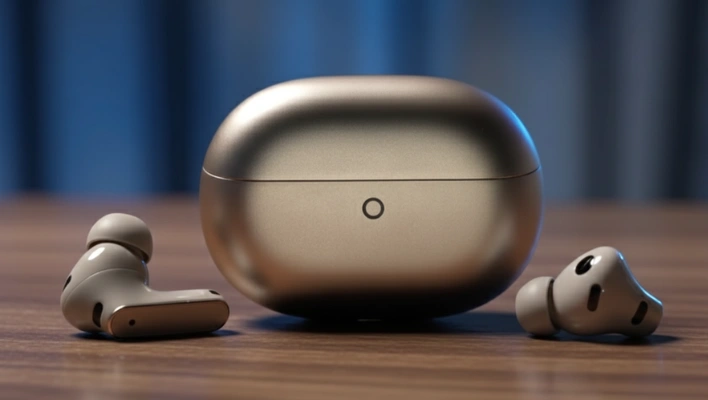If you’re stuck choosing between the Realme Buds Air 5 Pro and the Huawei FreeBuds 5i for your next pair of earbuds, you’re in the right place.
Both of these earbuds have a lot going for them, from great sound to cool features that make listening to music or taking calls a breeze. It can be tough to pick one, especially when they both seem so good.
In this article, we’re going to dive deep and compare everything from how they look and feel in your ears, to how long they last on a single charge, and of course, how good your favorite songs sound on them.
We’re here to help you figure out which pair is the best match for what you need.
Realme Buds Air 5 Pro vs Huawei FreeBuds 5i: Specs Comparison
| Specification | Realme Buds Air 5 Pro | Huawei FreeBuds 5i |
|---|---|---|
| Build Quality | High-quality materials, prone to scratches on glossy finish | High-quality materials, durable design |
| Charging Port | USB-C | USB-C |
| Water Resistance | IPX5 | IP54 |
| Available Colors | White, Black | White (glossy), Black (matte), Blue (matte) |
| Battery Life (Earbuds) | Up to 11 hours playback | Up to 6 hours with ANC active |
| Battery Life (with Case) | Up to 40 hours | Up to 28 hours |
| Bluetooth Version | 5.3 | 5.2 |
| Codec Support | LDAC (Sony Hi-Res Audio Wireless) | LDAC (Sony Hi-Res Audio Wireless) |
| Quick Pairing | Google Fast Pair (Android) | Huawei Pop-Up (Huawei devices) |
| App Support | Realme Link (Android, iOS) | AI Life (Android, iOS) |
| Independent Use | Yes | Yes |
| Multi-Device Connection | Yes | Yes |
| Sound Quality | Dual drivers for enhanced clarity and bass | Dynamic drivers, requires EQ adjustment for bass |
| Noise Cancellation | Effective, especially in noisy environments | Good performance, less pressure in the ear |
| Microphone Quality | High quality | Slightly better voice interpretation during calls |
| Price | €79.99 (may vary with offers) | €99 initially, often seen around €85-€90 |
Realme Buds Air 5 Pro vs Huawei FreeBuds 5i: In-Depth Review
Design and Build Quality
Both the Realme Buds Air 5 Pro and the Huawei FreeBuds 5i boast high-quality construction with cases that feel durable and well-made.
Despite their price difference, both models exhibit excellence in this regard. However, the Realme Buds Air 5 Pro has a glossy finish that is prone to scratches, a slight drawback in its otherwise stellar design.
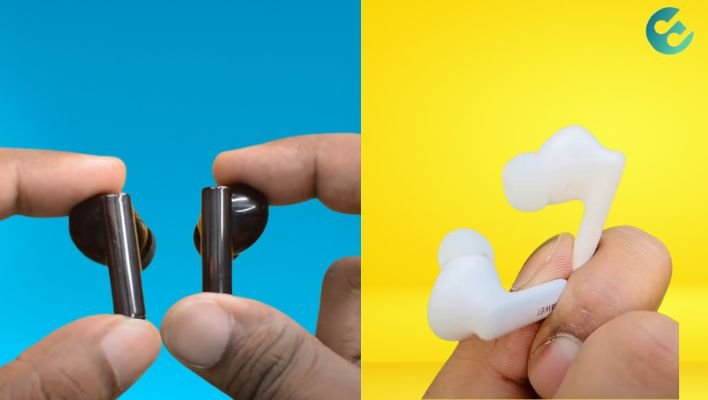
Both models feature USB-C charging, front LED indicators for battery and pairing status, a right-side button for pairing, and logos prominently displayed.
The earbuds themselves are quite similar in size and design, offering touch controls, distributed microphones for noise cancellation, and silicone tips for comfort.
Comfort and Fit
Comfort is paramount when it comes to earbuds, and both the Realme and Huawei models excel in this area.
They’re lightweight, secure, and suitable for high-intensity activities, thanks to their snug fit.
Resistance to elements like sweat and rain is guaranteed with IP ratings, with the Huawei FreeBuds 5i featuring an IP54 rating and the Realme Buds Air 5 Pro boasting an IPX5 rating, ensuring durability and reliability during workouts or in light rain.
Battery Life
Battery performance is a critical aspect of any wireless earbud. The Realme Buds Air 5 Pro shines with up to 11 hours of playback time, extending up to 40 hours with the charging case.
The Huawei FreeBuds 5i, on the other hand, offers up to 6 hours with noise cancellation active and a total of 28 hours with the charging case.
Realme edges out in this category, providing longer listening periods between charges.
Connectivity and App Integration
Connectivity is smooth and reliable for both models, with the Realme Buds Air 5 Pro featuring Bluetooth 5.3 and the Huawei FreeBuds 5i equipped with Bluetooth 5.2.
Both support the LDAC codec for high-resolution audio, although this feature is more optimized for Android users.

Realme also includes Google Fast Pair for a seamless connection experience with Android devices, a small but convenient advantage over Huawei’s offering.
Both earbuds are supported by their respective apps, providing a plethora of customizable features, from EQ settings to touch controls and firmware updates.
Realme’s app slightly outperforms Huawei’s in terms of functionality and user experience, offering a more comprehensive control over the earbuds’ features.
Sound Quality and Noise Cancellation
Sound quality is arguably the most important criterion for choosing earbuds.
Both models deliver excellent audio performance with dynamic drivers, but the Realme Buds Air 5 Pro stands out with its dual-driver setup, offering superior clarity and balance across the audio spectrum.

Noise cancellation is effective on both, with Realme providing a slightly more isolated listening experience, especially in noisier environments.
Price
The Realme Buds Air 5 Pro is priced at approximately €79.99, often found at a discount, making it an exceptional value.
The Huawei FreeBuds 5i starts at around €99, with potential discounts bringing it closer in price to the Realme Buds.
Where to Buy?
| Model | Best Deal |
|---|---|
| Realme Buds Air 5 Pro | View on AliExpress |
| Huawei FreeBuds 5i | View on AliExpress |
Realme Buds Air 5 Pro vs Huawei FreeBuds 5i: Which Should You Buy?
To wrap it up, both the Realme Buds Air 5 Pro and the Huawei FreeBuds 5i are top-notch earbuds, but if we have to pick, Realme edges out just a bit.
It nails it with better sound, longer battery life, and some cool extra stuff that might make it the go-to for a lot of folks. That said, you can’t really go wrong with either.
They both deliver awesome sound and solid performance, guaranteeing you get a great bang for your buck no matter which one you choose.
Also see:
- Soundcore Life P3i vs Life A3i
- OnePlus Buds 3 vs Realme Buds Air 5 Pro
- Haylou W1 vs Haylou X1
- TOZO NC2 vs NC9 vs T9
Nick, the Co-founder of Earbuds Arena, is a seasoned freelance tech journalist with over ten years of experience covering wearables, apps, headphones, and gadgets. When he’s not immersed in the tech world, you’ll likely find him unwinding with video games, going for a run, or enjoying a game of soccer on the field.
